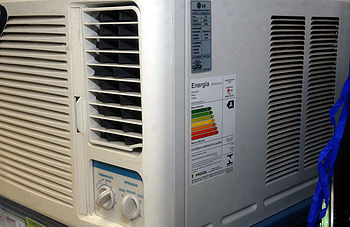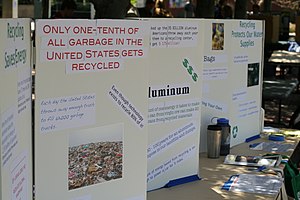Air quality is an important consideration for everyone; but it's especially crucial for the elderly, for children and for anyone with health conditions.
Fortunately, you can improve your home's air quality - And do it in an eco-friendly way. Here's how.
1. Turn Off Your Air Conditioner
 |
| Air conditioner (Photo credit: Wikipedia) |
Mold, even invisible mold, often grows inside air conditioners. AC units give mold the perfect environment to grow in: It's dark, it's moist and it's cool.
When you turn your AC unit on, that mold gets blown into your home. It can cause allergic reactions as well as worsen asthma. Instead, open up the windows and let in the fresh air! It will do wonders for your health as well as your mood!
2. Buy Some Plants
Nature built us an incredible air cleaning system: Plants. They are one of the most incredible filtration systems in the world.
Other air filtration systems can only filter out particles that are a certain number of microns or larger. Plants can basically filter out anything. They even turn the carbon dioxide you breathe out into fresh oxygen.
Plants also look fantastic. They can really add a sense of nature and joy to any house.
 |
| (Photo credit: Wikipedia) |
Having good ventilation can go a long ways towards improving your home's air quality.
Install fans near windows and other sources of outside air. Open windows instead of using air conditioning. Install windows in rooms that might otherwise feel stuffy, such as the kitchen or the bathroom.
If heat loss is a concern, you can install air to air heat exchange systems that allow you to get fresh air while not losing heat.
4. Install an Air Filter
A high-efficiency particulate air filter (HEPA filter)
When buying air filters, make sure you do your research to see which devices are ozone-producing air filters. Ozone can be irritating to the lungs, but actually smells like fresh air. People often think their air is clean, when really it's not.
Make sure you change your filters on a regular basis, or else your air filter can end up spreading pollutants around instead of cleaning them out.
These are just a few eco-friendly ways you can keep your air clean and your home fresh.












